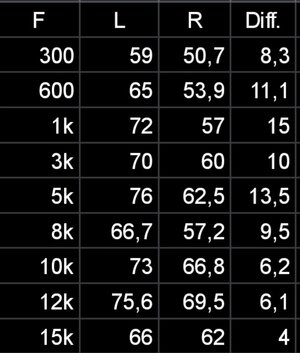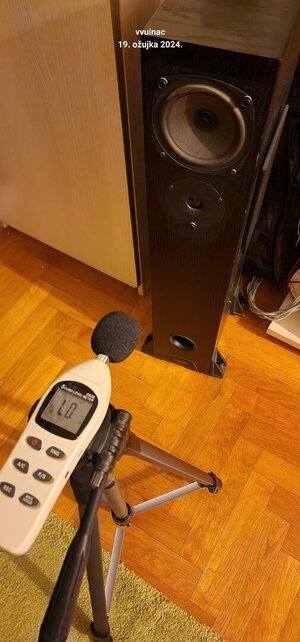Don't be confused - the sort of level meter you're using can be a very rough guide only.
(Its own frequency response will not be even).
I'm not sure you understand what I said about the input signals.
Let me just have one more go at explaining in a way that might be helpful:
If you were to take the amp somewhere for 'professional' assessment, they would feed the L & R inputs with a signal generator.
You are (effectively) doing the same.
But CRUCIALLY they would be putting an IDENTICAL signal through each of the Marantz's 2 channels.
Your test did not.
You put, first the L channel, then the R channel of your phone / DAC signal source through the Marantz.
You effectively used 2 different signal generators for your test - any discrepancy in those 2 generators will be there in your result table.
You could argue that your 2 'signal generators' should not be significantly different (and they shouldn't)....but there are variables beyond your control - not least YouTube and the creator of the tones you used.
If you want to do more meaningful future tests:
USE JUST ONE OF YOUR SOURCE CHANNELS FOR TESTS -FIRST THROUGH LEFT, THEN THROUGH RIGHT CHANNEL OF YOUR MARANTZ.
Thanks for detailed description.
First, I need to say tha first thing I tried is to swap output channels form DAC to the input of Martz.
In both cases speaker output on Marantz on R channel output was below level of L channel output.
So my focus is on the Marantz.
What I still can't figure out, is is the problem on the preamp stage of Marantz, or on the power output stage.
All I concluded is that signal form DAC is even (same level) on both L & R channel.
Having all of that in mind, all measurements were done assuming that Output signal from DAC L &R channels is more or less the same.
I understand that my dB level meter is not professional equipment (so it might have tolerance around 10%), but tollerance is supposed to be more or less the same on both measurements, since both measurements were done with same room temperature. So, regarding the tolerance, max. expected difference shouldn't be more than a few dBs, not 5 or 10. Hmmh, 10% of 50 is 5..but still, the difference wouldn't be always on the same channel.
The difference is not arguable - it is there. The question is, is it manifesting in the preamp stage of the amplifier, or on the output stage.
Since I fed it with some questanable input audio signals from PC, I doubt the fault is on the input stage of the Marantz.
For that, I would have to measure an preamplifier output levels of the Marantz, right before Volume potentiometer, then after the volume pot (to eliminate that potentiometer is an issue).
So, I need to drive to a friend of mine, put it on a table, connect signal generator to the input of the Amplifier, and measure signal with oscilloscope probes somewhere on the preamp section. And then I'll drive to the Service center, and they will perform all of the testing again, and charge it too.
So, in conclusion, whatever I do, it is waste of time
🙂 .



